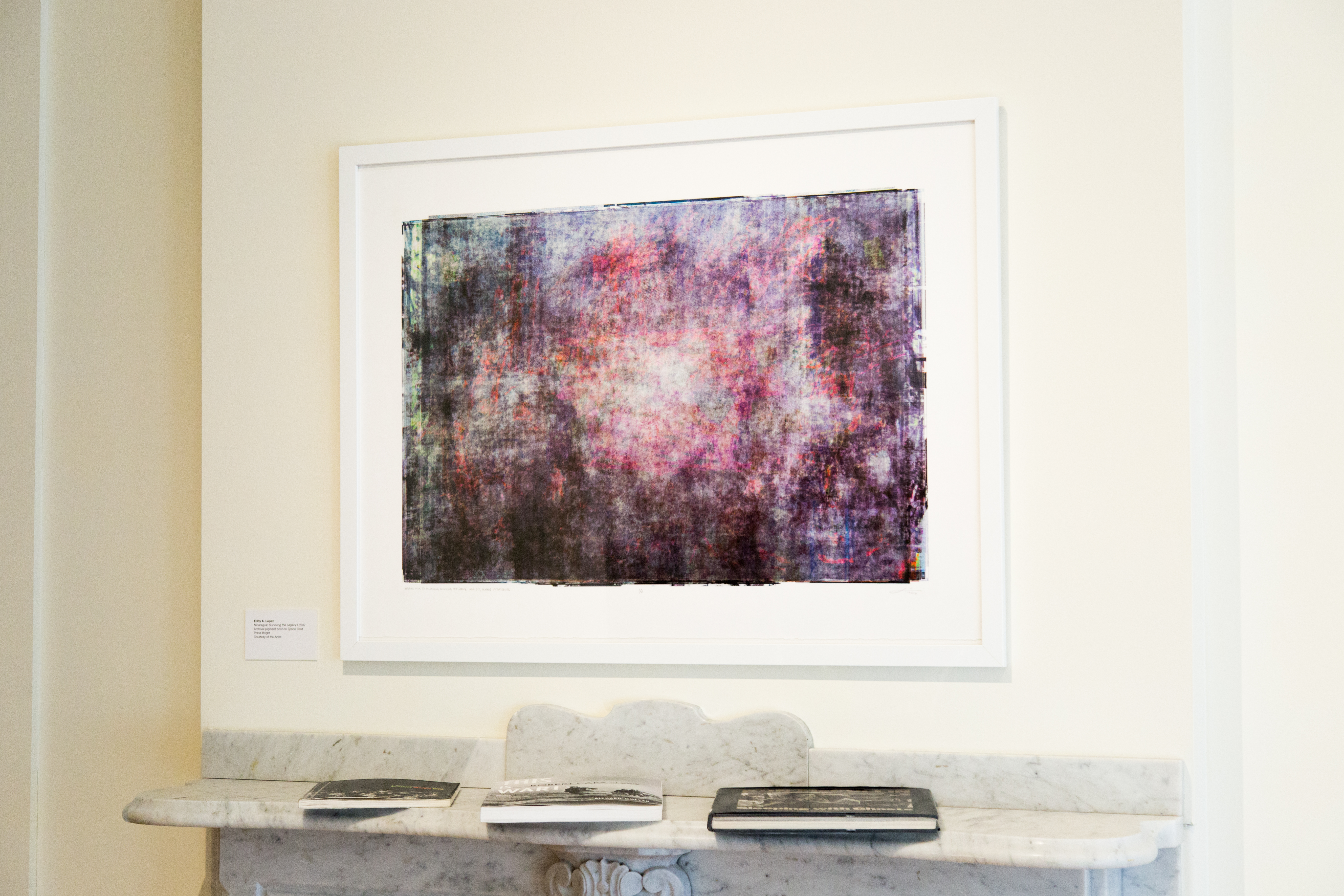by Julia Carita ’20, Student Guide
Eddy Lopez’s Nicaragua: Surviving the Legacy I and II bring the work of photojournalist Paul Dix and activist Pamela Fitzpatrick full circle. These prints are based off of the pair’s 2011 book Nicaragua: Surviving the Legacy, which documents the stories of 20 individuals who lived through the Contra war that followed the overthrow of the Somoza dictatorship.

The Nicaraguan Revolution began with the establishment of the Sandinista National Liberation Front (FSLN) in 1961, which was founded in opposition to the conditions in Nicaragua under the Somoza dynasty’s rule, as well as American involvement in Nicaraguan politics. In 1978, the country erupted into a revolution, and the Sandinista rebels took control of the government. In response, the United States back an opposing force called the “counter-revolution,” or the “contras,” who attempted to violently regain control of the country.
It was during this conflict that Dix and Fitzpatrick arrived in Nicaragua with the Witness for Peace Organization. As they traveled the country meeting and working with local communities, Dix frequently photographed the things they saw and people they met, hoping to show the American people upon his return home what the United States was funding. In 2002, after the conflicts had ended and they had returned home, Dix and Fitzpatrick decided to turn Dix’s photographs into a book commemorating the victims of Contra violence they had met. They sorted through the photos and chose over 100 people who they hoped to find again and interview.
In the preface of the book, Fitzpatrick recalls the helpfulness of the communities upon their return. She explains that, upon reaching one of these small communities, a crowd would gather and help identify and locate individuals based on their photographs from 15 years earlier, sometimes prompting them to follow chains of recollection until they reached the individual. Over the course of eight years, Dix and Fitzpatrick were able to locate and interview nearly all of the Nicaraguans they had hoped to find. Ultimately, the chose to include the photographs of 30 people who survived the contra war, along with 19 testimonies.
As a Nicaraguan native who grew up amidst the revolution, artist Eddy Lopez can certainly related to Dix and Fitzpatrick’s book. Through his art, Lopez brings these testimonies together and creates a representation of the Nicaraguan experience during the Contra war. His first prints inspired by the book, titled Nicaragua: Surviving the Legacy I, used a comptuer algorithm to layer each of Dix’s 30 published photographs on top of each other, resulting in an abstract field of undefined shapes and shades that recalls a watercolor painting. His second print, Nicaragua: Surviving the Legacy II, uses the same digital layering technique, although here he layers photographs of the book itself. The result is a monochromatic print that is perhaps reminiscent of an x-ray image.

Lopez’s artwork brings Dix and Fitzpatrick’s book full circle by, in its own way, telling the story of another Nicaraguan Revolution survivor. Indeed, the exhibition holds true to the same ideals that Dix held while photographing Nicaraguans in the 1980s. Although each print is different on the surface, to me, they all serve the same purpose: to recognize the horrors of this period in Nicaraguan history while creating something from it that is, against all odds, beautiful.
Beautiful War will be on display at the Samek Art Museum’s Downtown Gallery through June 3rd.

